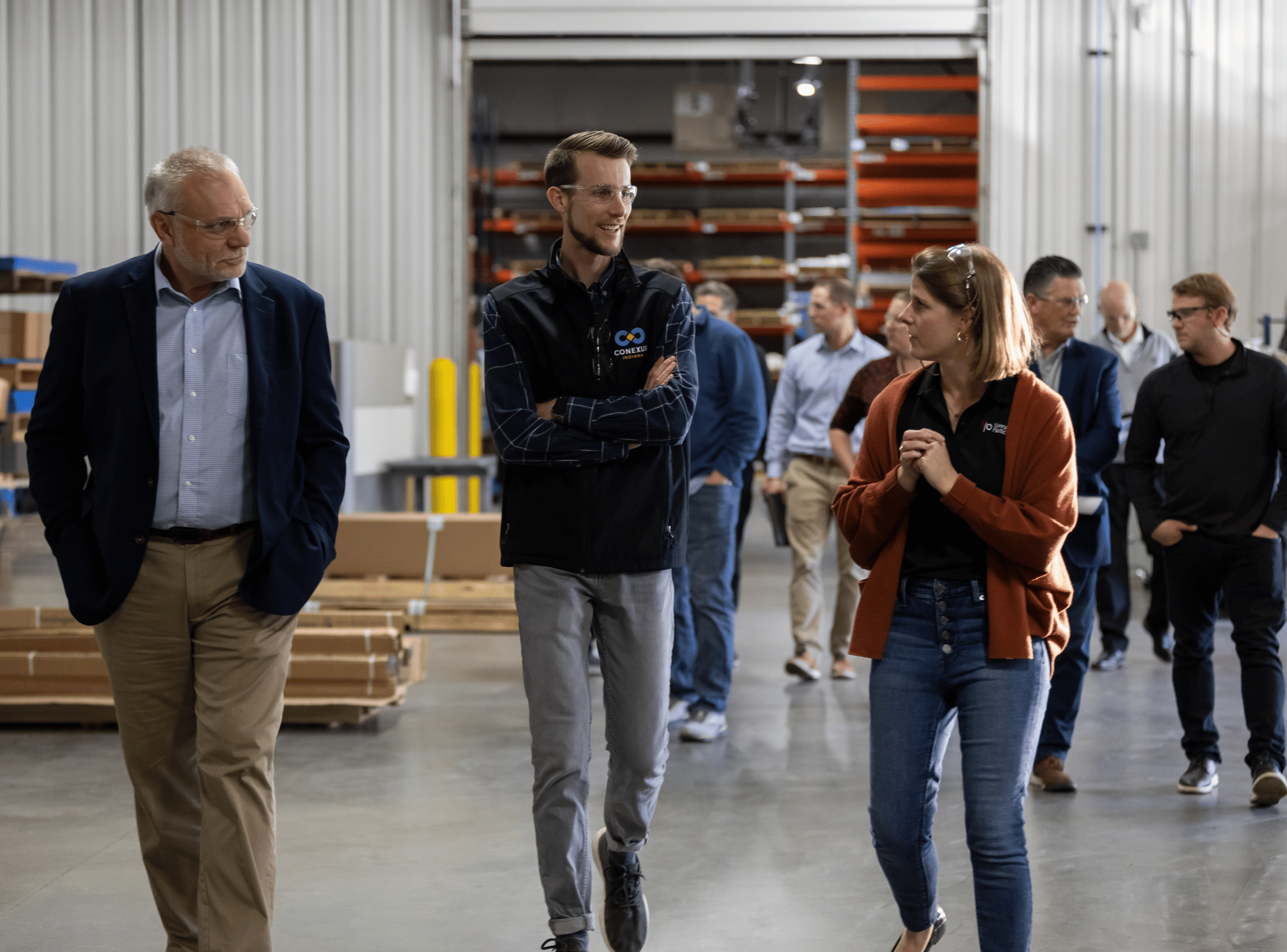
Event Summary
Conexus convened regional subject matter experts on October 28, 2022, at Konrady Plastics, a Portage, Indiana-based plastics machining manufacturer, for a peer-to-peer discussion around Konrady’s recent collaborative robot (cobot) investments. The firm serves as one example of Indiana’s small- and medium-size firms implementing Industry 4.0 to boost productivity and address labor shortages. The discussion also featured Fusion Robotics/RoboJob-USA, one of Konrady’s technology integrators.
Konrady Plastics Industry 4.0 Background
As a manufacturer specializing in machining and distribution of sheet, rod and tube plastics, Konrady is focused on growth by leveraging technology. With CNC lathes already standard, CEO Leah Konrady recently began championing efforts to integrate more advanced automation. The firm partnered with Fusion Robotics/RoboJob-USA to identify solutions related to machine tending manufacturing processes. The solution they chose was collaborative robots (or cobots) that could pick and place parts within their CNC lathes to optimize beyond the previously human, manual task of tending the CNC lathes. Simultaneously, the firm learned about the Indiana Manufacturing Readiness Grants program, which financially assists manufacturing innovation. You can read more about Konrady’s specific project in this case study published earlier this year.
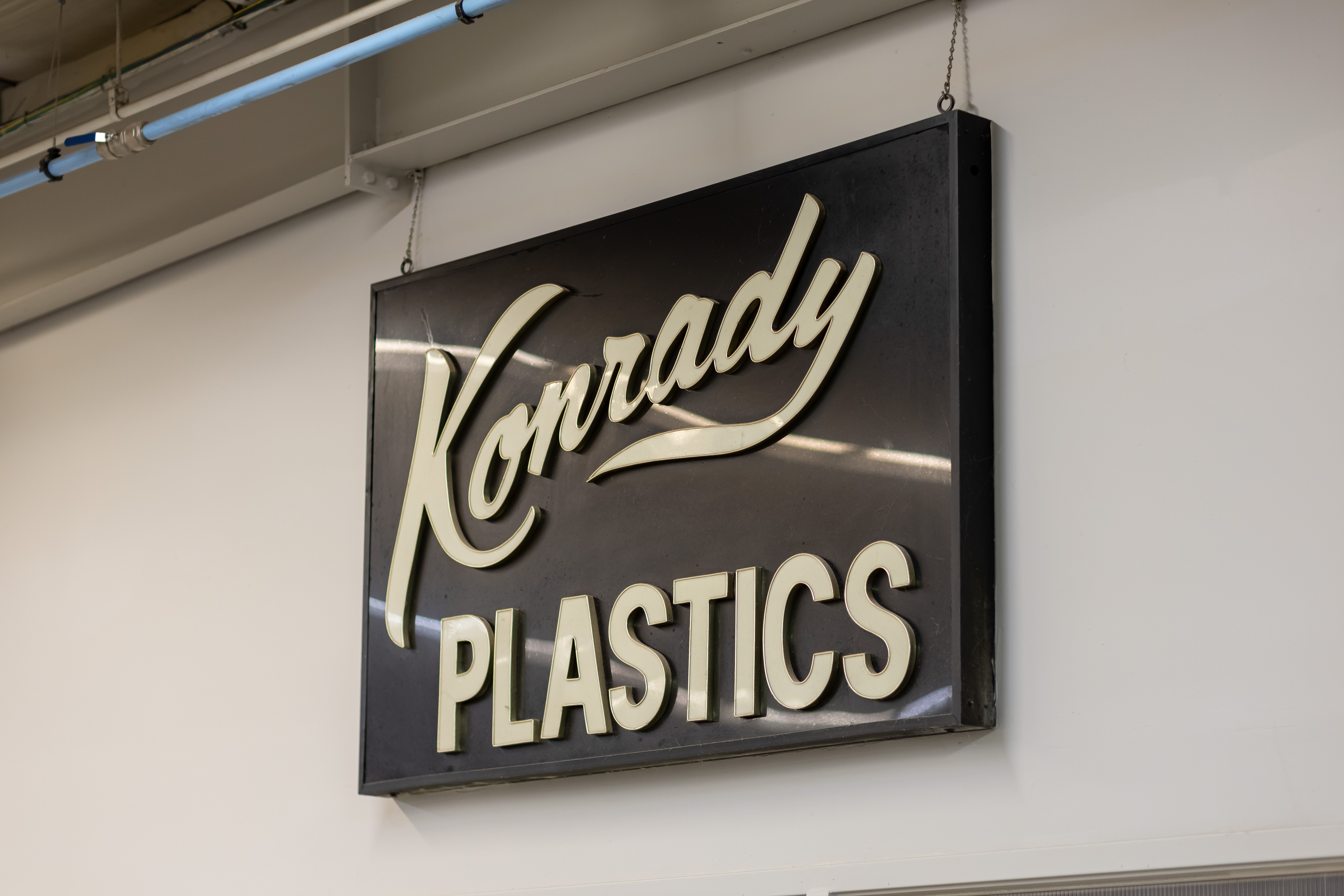
Technology Integration Companies as Partners for Innovation
Fusion Robotics/RoboJob-USA has a long history working with manufacturers in Chicagoland, first as a contract manufacturer and then later as a tech integrator. Craig Zoberis, company founder, shared with the group how he applied the firm’s manufacturing experience to expand focus into technology solutions. He identified Belgium-based RoboJob as an industrial automation equipment vendor well suited to Fusion Robotics/RoboJob-USA’s current and future clients. The partnership enables a seamless three-step process:
- Investigate: With the client, Fusion Robotics/RoboJob-USA determines where the client is on its automation journey and identifies the best technology solution.
- Prepare Site Readiness: Preparing the site for installation, including infrastructure modifications and plans for shutdown, upgrade and restart, is an important next step.
- Implementation: The final step is delivery, installation and training.
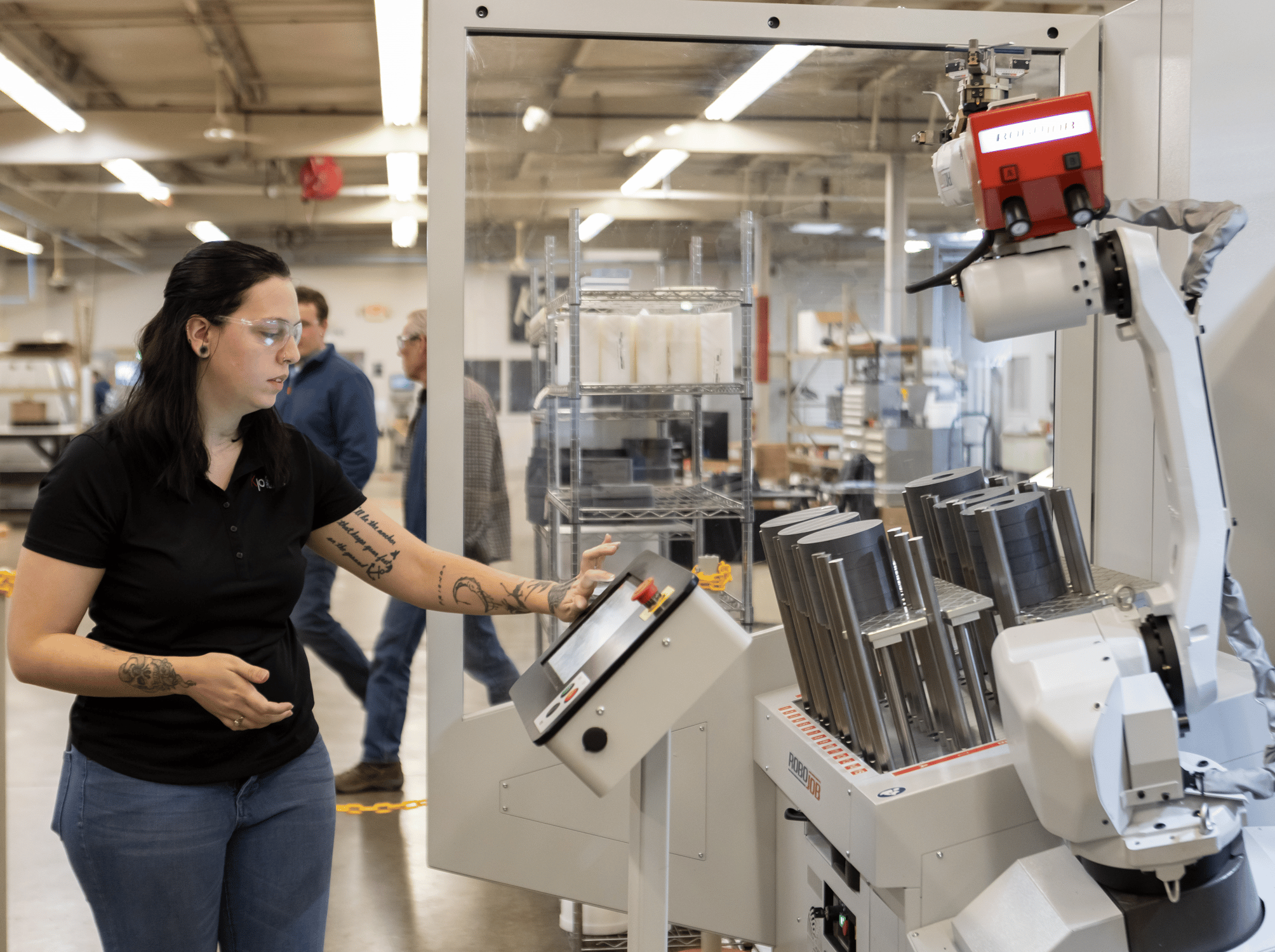
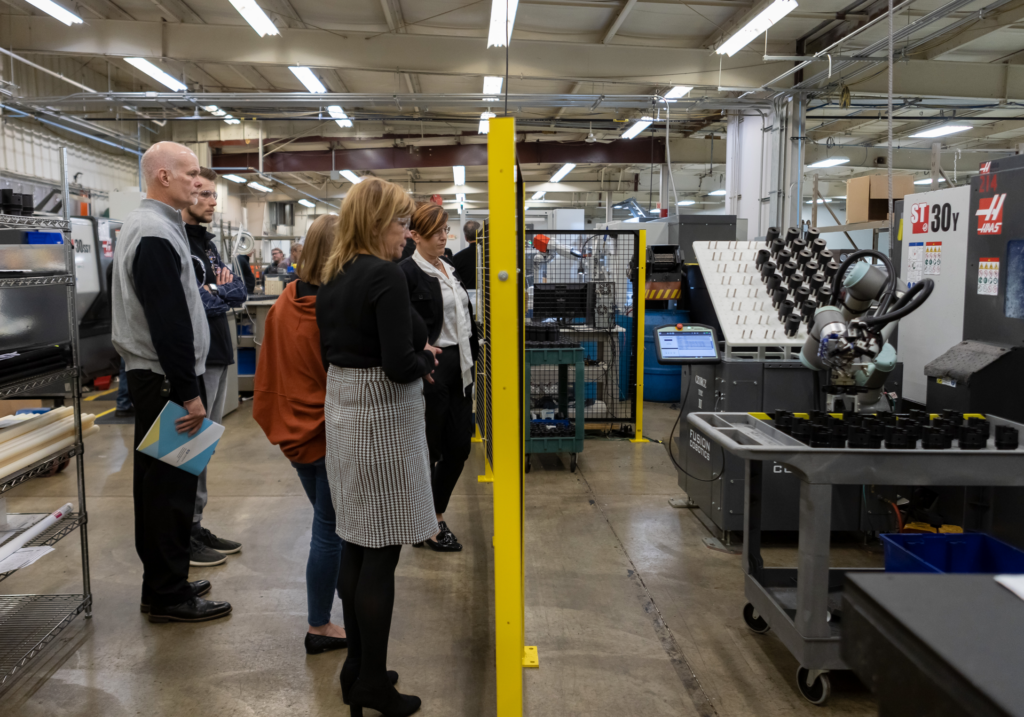
Konrady Industry 4.0 Implementation
Konrady pursued two separate cobot projects with Fusion Robotics/RoboJob-USA; each requiring different solutions, but both following a similar implementation process. Once the COBOTs were delivered, Fusion Robotics/RoboJob-USA deployed service engineers to install the equipment and get it up to speed. The timeline to install and operationalize took 1 business week, and by the following week, the CNC lathes were up and running with the new technology. Leah Konrady said it was “seamless” with the technology integrator’s support.
Key takeaways from the peer-to-peer discussion:
- Invest Time Upfront on Research and Exploring Technology Grants: Use case best practices can often be found that can put you on the right track. Konrady, as a plastics machining manufacturer, tapped into resources from plastics manufacturing trade associations and other sources as it was crafting its Manufacturing Readiness Grants application.
- Communicate Forthcoming Technology Changes & Build Employee Buy-In: Early involvement of and engagement between frontline operations and engineering is key. Konrady communicated with employees to ensure they understood motivations. Staff embraced the changes and contributed to implementation. Seasoned machinists saw how the technology would increase their productivity and quality, and younger frontline staff were eager to work with the technology. Konrady even identified “champions” who were instrumental to success.
- Plan How to Operate and Maintain Technology Once the Tech Integrator Departs: Ensure that company engineers and frontline staff can successfully operate new technology from “0 to 100” – meaning staff should be able to program or re-program equipment. Konrady facilitates several high-mix, low-volume production jobs, which require frequent programming modifications. Initially, they underestimated the level of ongoing programming, but gained mastery within months of operation.
- Spend Time Upfront with the Tech Integrator: Identify potential use cases, focus on “pain points” and explore solutions options. Many processes can be automated, but prioritize your most critical needs.
- Fully Vet Prospective Integrators: Request client referrals and examples of prior success. Ask hard questions about equipment downtime, installation process, ongoing expenses, project viability and more.
- Frame the Opportunity in terms of Value-Adds to Gain Leadership Buy-In: When attempting to convince leadership to fund the project, quantify prospective return-on-investment. Look toward value-adds such as quality improvement gained when replacing highly routine, monotonous tasks with automation. Mistakes are inevitable when humans carry out repetitive and tedious tasks over an 8-10 hour work shift, and technology can often reduce those errors.
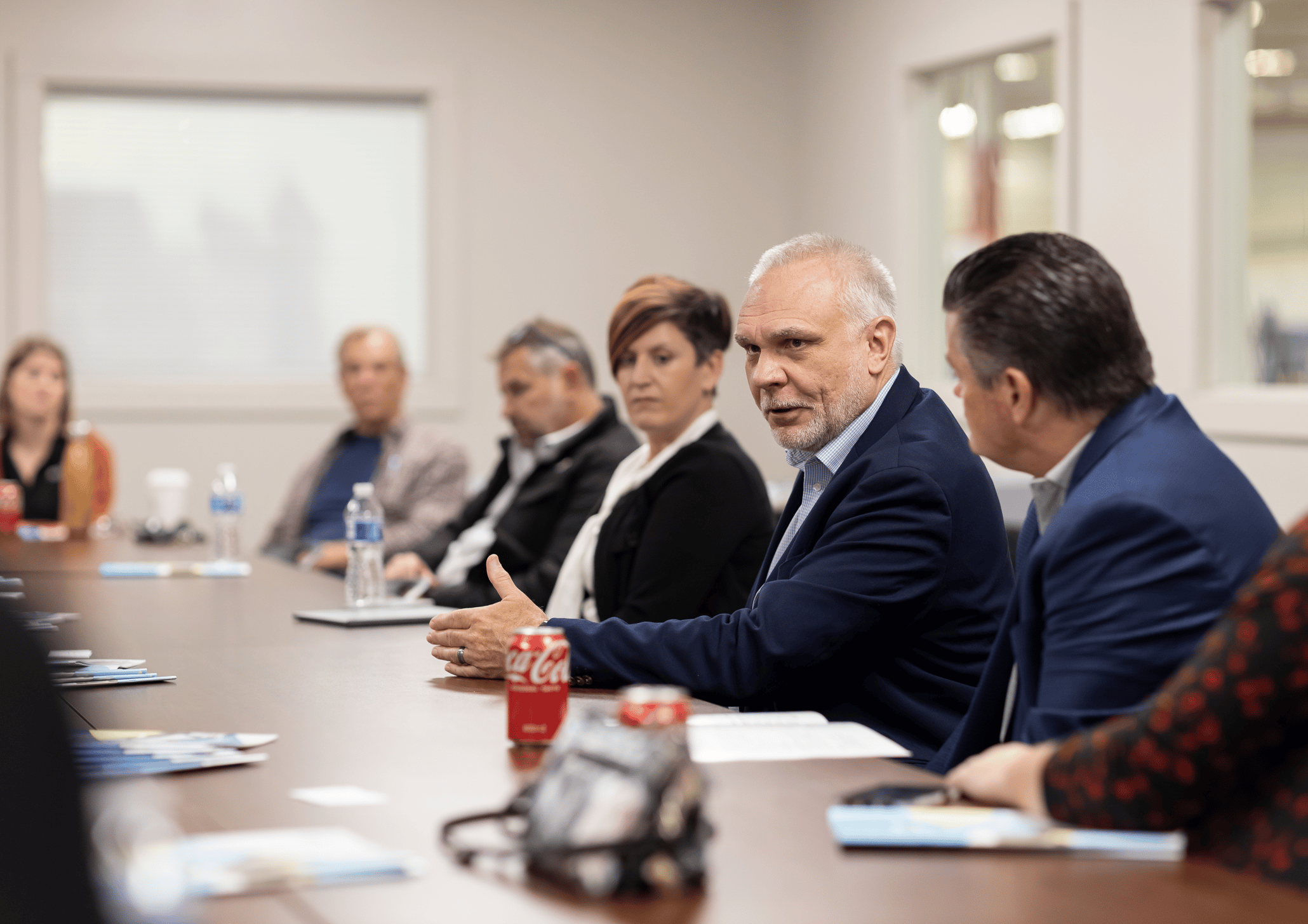
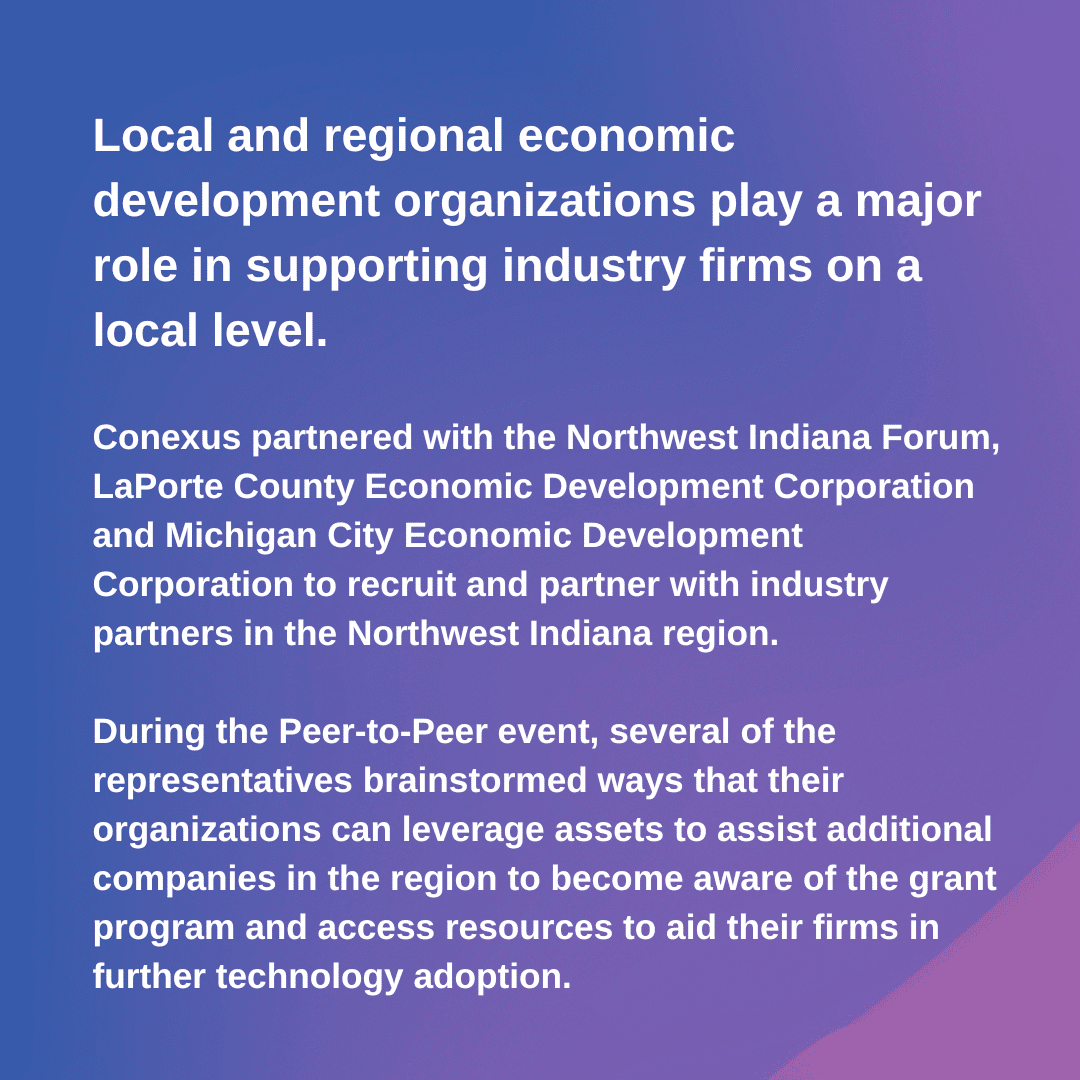
Get Involved
Conexus Indiana’s Peer-to-Peer Network is an invite-only forum for Indiana manufacturers and logistics companies to share knowledge and best practices about advanced technology they have utilized or are seriously considering.
Ultimately, we hope these conversations will drive greater adoption of advanced technologies by allowing a variety of stakeholders to learn about technology among engaged and informed peers. Reach out to Conexus Indiana to get involved.
